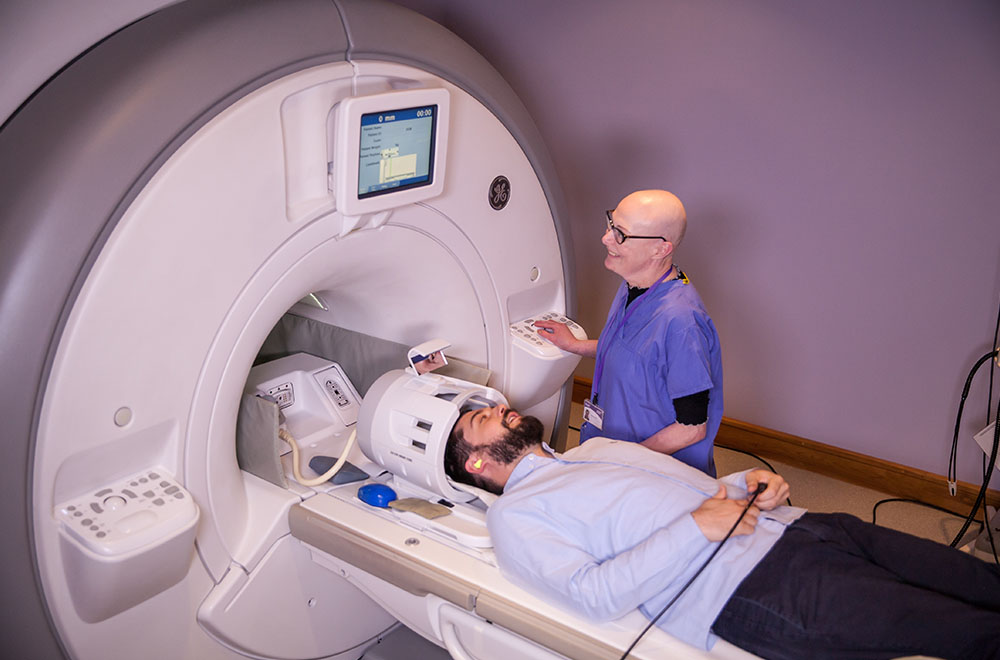What is an MRI?
MRI is way of producing detailed pictures of whatever body part we are scanning (at the Epilepsy Society this will usually be your brain or occasionally your spine). It is completely harmless but does involve a strong magnetic field and is very noisy.
What does an MRI show?
A brain or head MRI shows the structures inside your head in lots of detail. It can show if there are any abnormalities in your brain or the surrounding tissues. These changes may contribute to seizure activity.
A functional MRI scan usually (but not always), involves you thinking about words, or you may be given a different task to do whilst you are scanned.
Before you have the test
There is no preparation needed before the scan, but come wearing comfy clothes. Try not to wear any jewellery or belts etc. Cotton joggers and a T-shirt are best. Please try and wear a bra without underwires or metal clips if possible.
Health Passport
‘My Health Passport’ is a resource for anyone who might need MRI scans. It’s designed to help individuals communicate their needs, preferences, and important information to doctors, nurses, and other healthcare professionals.
Download your Health Passport here to help your healthcare team understand your medical history, needs, and preferences, so that you get the care that’s right for you.
Having a routine MRI
During the test, you lie in a long tube shaped machine that scans your head while a computer creates pictures of your brain. These images are displayed as slices - like slices of bread.
The MRI scanner uses a computer, radio waves and a very strong magnetic field to take the detailed images. It is completely painless but does make a loud noise and some people do not like being in the scanner. A MRI scan is very safe though and the Radiographers will help you. You can also bring a friend or relative to stay with you during the scan if needed.
After the test
There are no special instructions after the test and you will be able to go home.
FAQ
Will the test hurt?
The test is completely painless although some people may experience peripheral nerve stimulation (PNS or muscle twitching). It can also aggravate hearing conditions like tinnitus, but both of these effects are unusual, very temporary and not harmful.
Are needles involved in the test?
Sometimes the doctor will ask us to do some images with ‘contrast’. This involves giving you an injection into a vein in your arm using a very small cannula. We normally place the cannula in your arm at the beginning of the scan, but don’t give the contrast until towards the end. The contrast should have no effect on you but can help the doctor diagnose certain conditions.
Can you tell what I am thinking?
No, even if we are doing a functional scan on you, we cannot see what you are thinking. We can only see the area of the brain that you are using to think. This can be useful particularly if you are considering having epilepsy surgery, to help the Surgeon plan your operation.
Can I wear jewellery?
Please try not to wear any jewellery or loose metallic items. Some athletic gear with a special anti-microbial coating (anti wicking coating) can be problematic. This also applies to period pants (although it is perfectly fine to come for a scan whilst you are having a period).
When will I get the results?
Structural scans (brain scans) are normally reported by the Neuroradiologist within 2 weeks, but you may have to wait until your out-patient appointment with your consultant to discuss these.
Functional scans may take longer to report, but your consultant will also discuss these with you.
Download an easy read guide to having a MRI scan
For a printed copy contact our Helpline.

